Table of Contents
Overview
What Is Programmatic Advertising?
Through the use of the following technologies, programmatic advertising automates the process of purchasing advertising space:
- Demand-Side Platforms (DSPs): These are websites that let you buy advertising space from publishers through ad exchanges like Google Ad Manager.
- Supply-Side Platforms (SSPs): Platforms that enable publishers to control and provide ad space to advertisers, marketers, and other parties interested in buying ad space are known as supply-side platforms (SSPs).
- Data Management Platforms (DMP): Platforms for collecting and managing user data for programmatic advertising and other forms of digital marketing are known as data management platforms (DMPs).
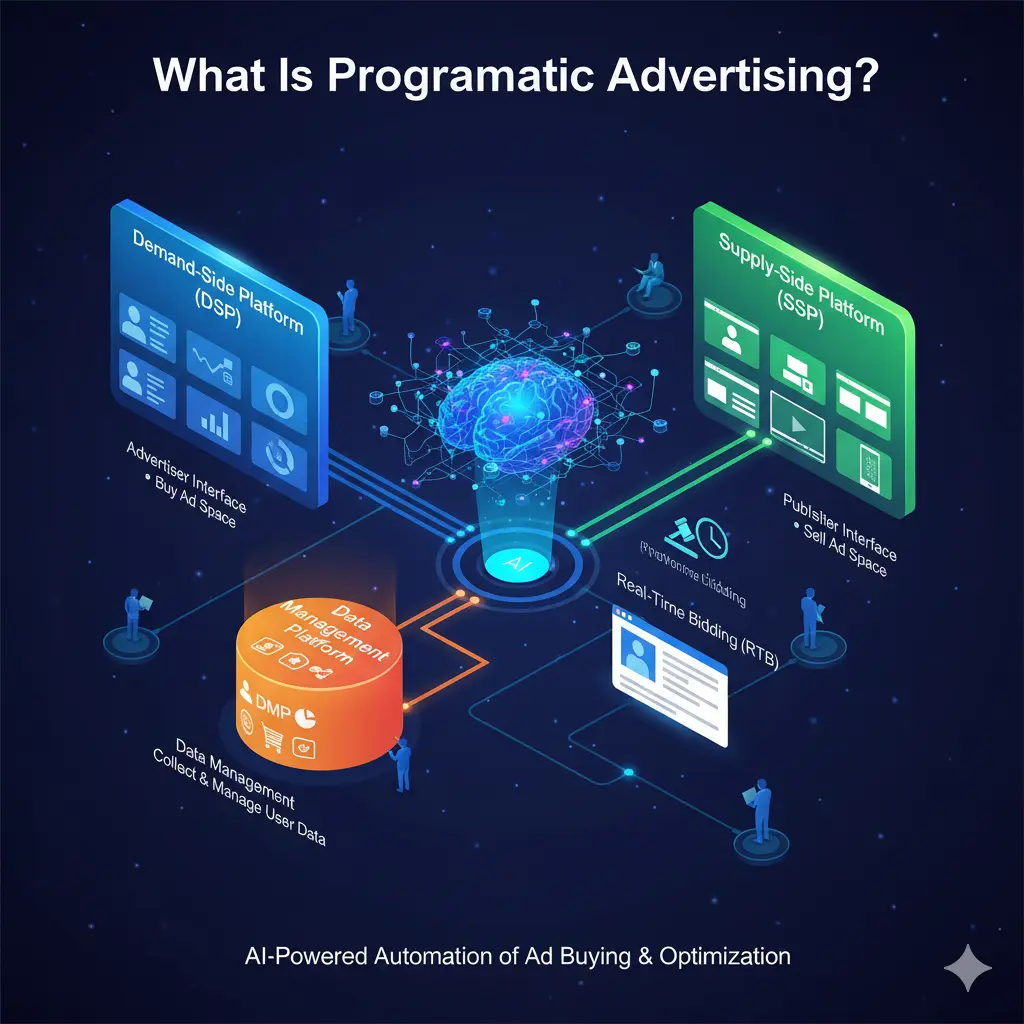
Definition
Programmatic advertising automates the process of buying and bidding on ad space by combining these three technologies with artificial intelligence (AI).
Programmatic advertising makes the process smarter by relying on user data to provide relevant adverts in milliseconds when compared to traditional advertising.
Who Can Use Programmatic Advertising?
One method for businesses/enterprises to promote on digital screens is through programmatic advertising. Before programmatic ad buying, digital ads were purchased and sold manually, which made the process costly and unreliable.
Because publishers have enabled native ads on their websites, programmatic advertising has reached unprecedented heights. The main reason publishers are embracing programmatic native advertising is that it is less susceptible to ad blockers than other ad formats and platforms.
Furthermore, it gives marketers more time to optimize and develop ads using programmatic techniques to deliver campaign success. The Brisk will help you out through the whole process without fail.
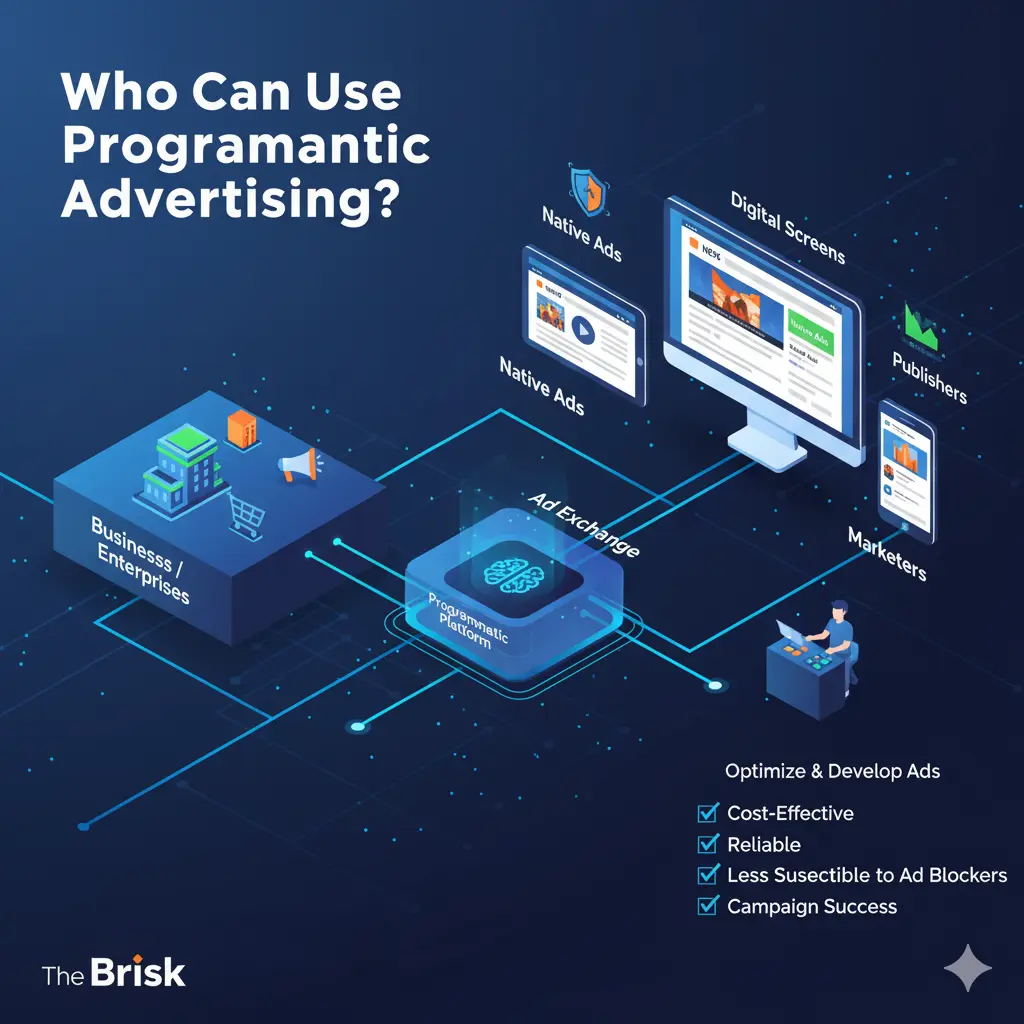
Types Of Programmatic Media Buying
Unlike traditional media buying, programmatic advertising may not always entail advertisers and publishers working one-on-one to serve ads. The type of programmatic arrangement selected determines ad distribution.
The regulations for displaying advertising on publishers’ websites are dictated by various types of programmatic deals.
Let’s take a look at the most important programmatic deals:
1. Real-Time Bidding (RTB)
2. Private Marketplace (PMP)
3. Preferred Deals
4. Programmatic Guaranteed
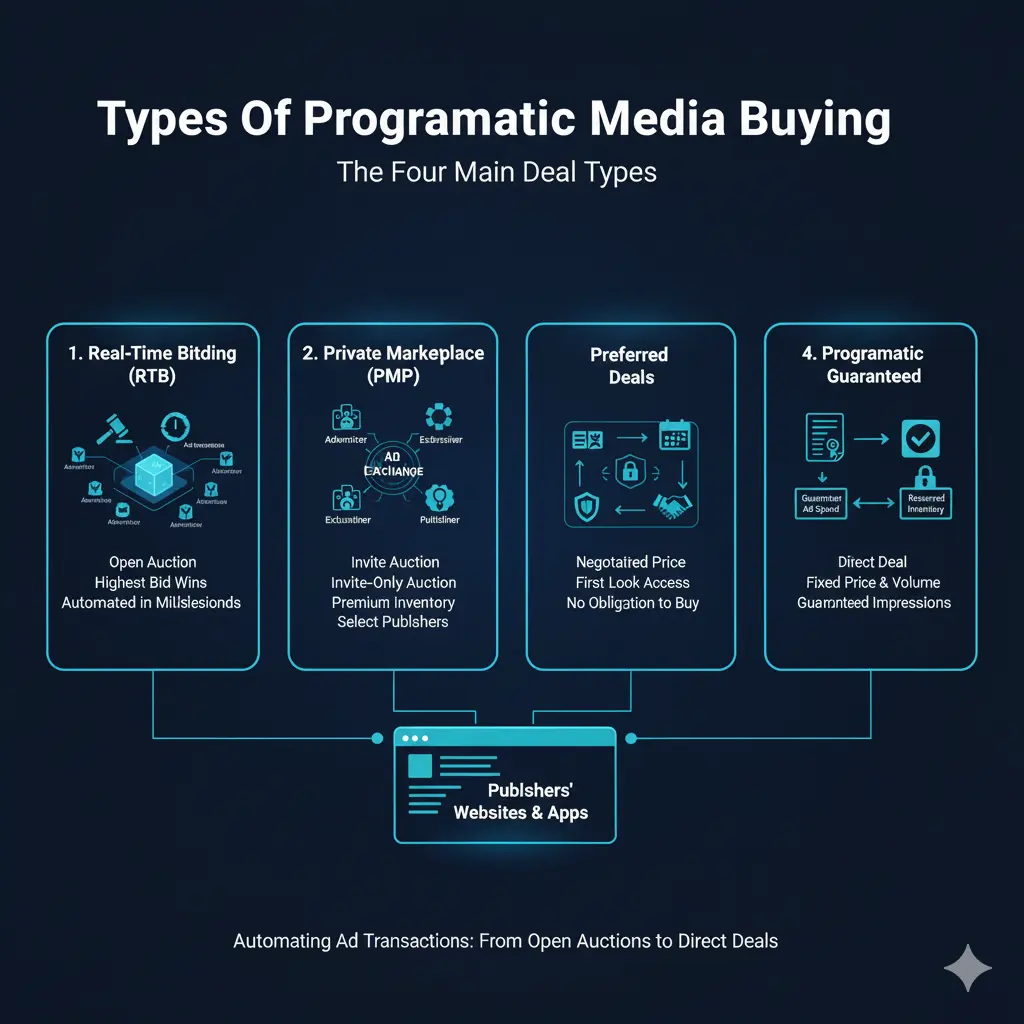
How Does It Work?
This explanation of programmatic advertising’s operation should clear things up if the definition left you perplexed; we’ve even included a helpful diagram to make it simple to follow.
Let’s start by taking a look at the process of programmatic advertising in general:
- Arrive: The automatic advertising process is started whenever a visitor visits a website that uses programmatic advertising. Users are unaware of programmatic advertising because it occurs in milliseconds.
- Send: The website publisher automatically notifies an SSP, or supply-side platform, of the dimensions of its advertising space in response to a person visiting the website. This phase can be thought of as the publisher listing their product for marketers to buy.
- Read: The SSP examines a user’s cookies after learning about the available ad space. To serve a suitable advertisement, it is important to understand as much as possible about the user, including their interests and demographics.
- Consider: The coordinating demand-side platform, or DSP, then enters the picture. The DSP can assess the user’s worth and assign a value, or the worth of that user’s impression, by looking over the data obtained by the SSP.
- Bid: The DSP submits a proposal to the SSP after assigning that user a value. Real-time bidding is a term that some people use to describe programmatic advertising because this process occurs in real-time (RTB).
- Pick: After receiving the DSP’s bid, the SSP will evaluate it and all other bids. The highest bidder is frequently the SSP’s choice for the winning bid. You may pay your top bid or the amount of the second-highest bid, plus a fee, depending on the auction.
- Deliver: After selecting the winner, the SSP sends the user’s advertisement. Due to how quickly programmatic advertising works, the page will load with the ad visible rather than loading first and then refreshing to show the ad.
Many publishers use fraud protection to stop fake views. By using this safeguard, you may prevent spammers and other undesirable customers from using the advertising space that your business has paid for.
5 Ways Programmatic Advertising Works For Your Business
Now that we know what programmatic advertising is, let’s talk about how it can help your business. Programmatic advertising has various benefits, whether you are in charge of managing your marketing initiatives or working with a marketing agency. The following are five of programmatic advertising’s most noteworthy advantages:
1. Lower your advertising costs
The primary benefit of programmatic advertising for many businesses is cost savings. You may optimize your ad expenditure by automating your bidding procedure and changing your cost per thousand impressions (CPMs) in real-time. Take Google as an example.
2. Maximize your productivity
You can increase your productivity using programmatic advertising. Additionally, you can devote your time to other urgent duties that require your focus. The reason is that programmatic advertising takes care of the bidding and buying of ad space on your behalf and doesn’t need your assistance.
3. Streamline your ad buying
It can be too much to handle if you’re handling all of your marketing and advertising. But the lengthy process of buying ad space can be streamlined with programmatic advertising. This advantage enables you to concentrate on the overall results of your advertising approach.
You can optimize your campaign and bids to generate more outcomes, such as more quote inquiries or product orders, by adopting a more strategic approach.
4. Expand your audience insights
Programmatic advertising’s audience insights are a huge benefit. You can utilize that information to inform both your current and upcoming campaigns.
For instance, you might discover more about your audience’s interests. This can assist you in creating commercials that draw in and hold the attention of your target audience while also motivating them to do the necessary action, like making a purchase.
By evaluating audience insights and contextual data from their campaign, Kellogg’s, for instance, enhanced their targeting in their programmatic advertising campaign by a factor of two to three.
5. Achieve your KPI goals
Programmatic advertising assists you in achieving your key performance indicator (KPI) objectives by allowing you to focus on your target audience and collect useful user data.
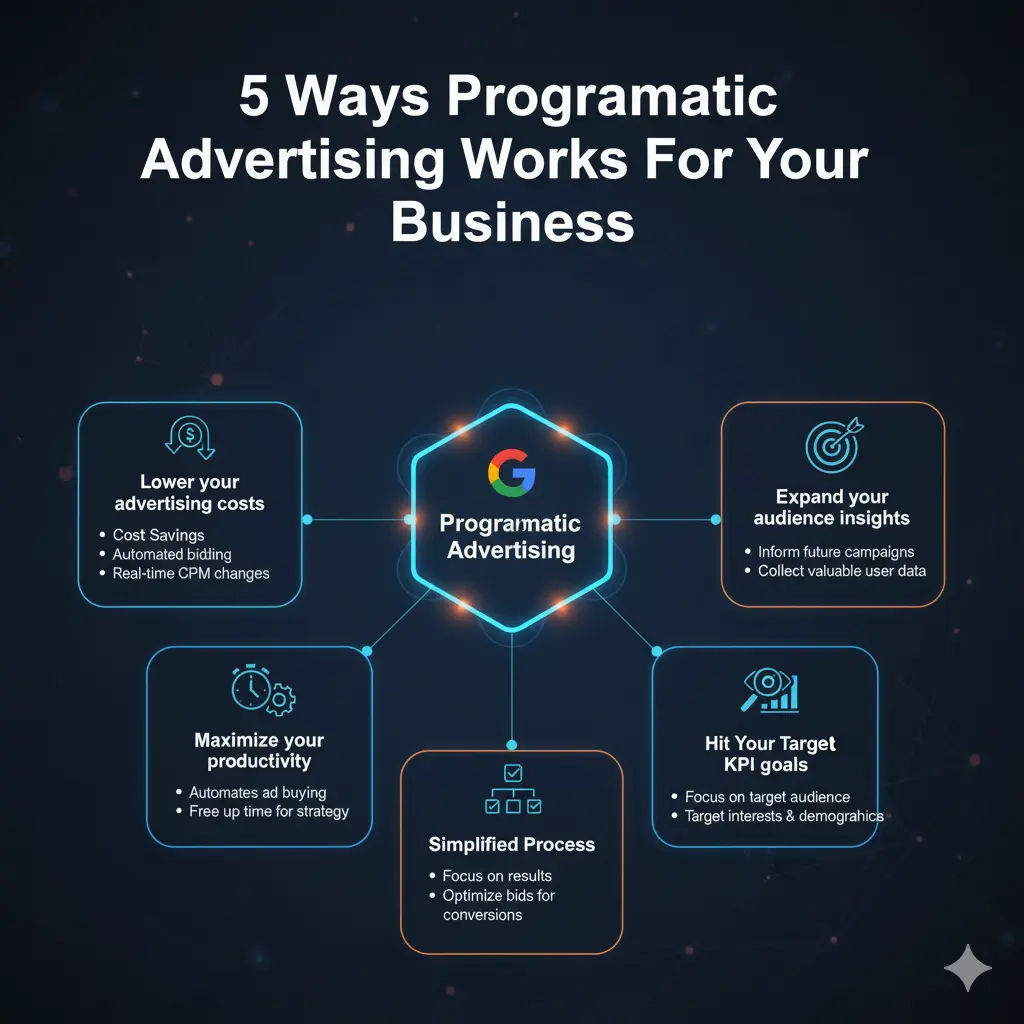
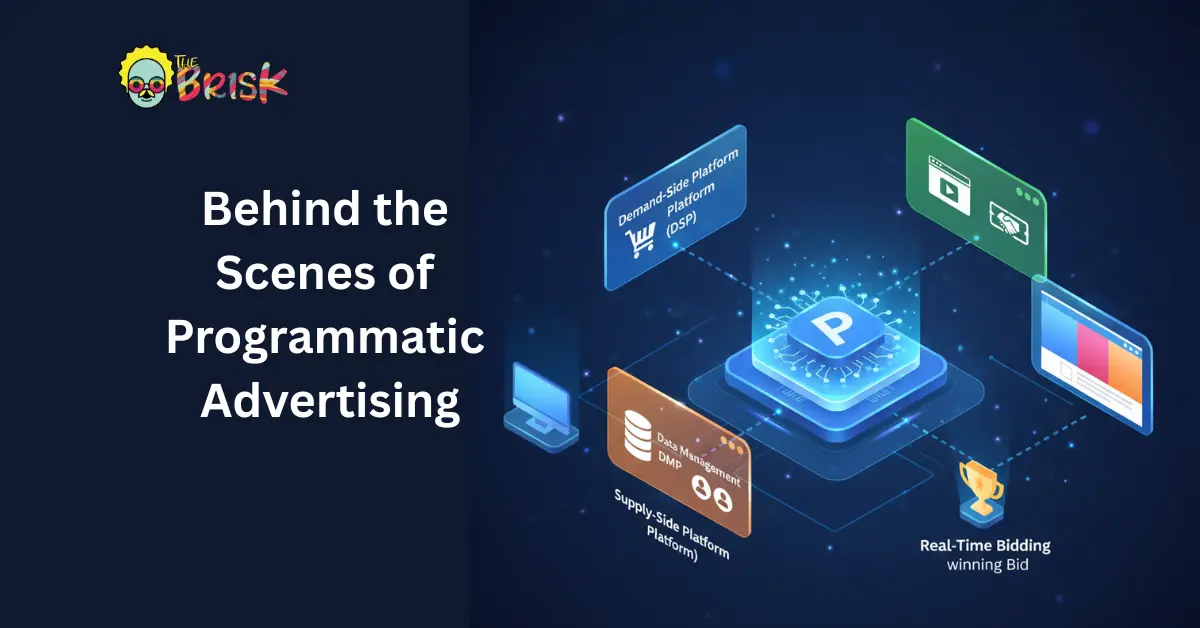


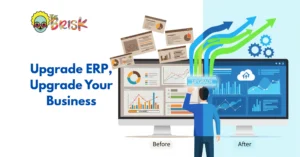
No Comments